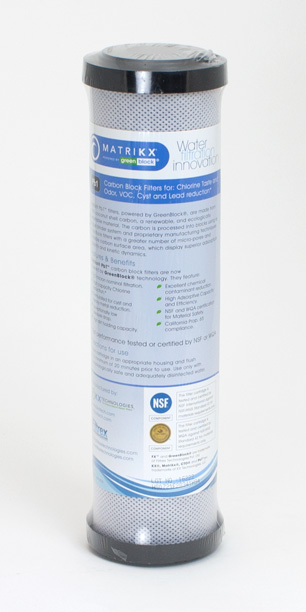Pure Water Occasional, December 23, 2019 |
A trial project by a company called Scottish Water is examining a method of wastewater treatment that relies on earthworms and water fleas to treat wastewater in a natural way. The project manager explains:
“The first stage of treatment involves a tank filled with earthworms – the worms eat the larger particles of organic matter in the waste water, before it is added to a second tank containing water fleas and micro-algae which remove the finer bits of organic matter. At this stage, the water should be in a condition that would allow it to be returned back to the natural environment.” Full article.
The Kariba dam has plunged to its lowest level since 1996, raising further risks to the hydropower plants that Zimbabwe and Zambia depend on for nearly half of their power. Large parts of Zambia and Zimbabwe are experiencing the worst drought in at least four decades, forcing the nations to cut generation from Kariba after water flows fell sharply in the Zambezi river that feeds it. Each country has implemented power cuts lasting as long as 18 hours a day as a result. Bloomberg News.
Thousands of fat innkeeper worms, also known as “penis fish,” washed up on Drakes Beach in California.
Access to clean drinking water is the top issue facing Wisconsin, according to a new survey of voters in the southwest region, where a high number of private wells are contaminated. A majority of respondents said they would favor candidates who support more regulation to protect drinking water, and two-thirds believe water quality will be an issue in the next general election, according to the study conducted for the Environmental Law & Policy Center’s Action Fund. Safe, clean drinking water was ranked very important by 82% of voters and fairly important by 7%. That’s more than infrastructure, health care or public education. Kenosha News.
Extensive studies at the University of Michigan led to the conclusion that water births are just as safe as land births. Science Daily.
A broken 30" water main in San Diego caused street flooding so severe that drivers had to be rescued from cars.
Democratic Gov. Tom Wolf of Pennsylvania says test results “do not indicate widespread PFAS contamination” in drinking water supplies. In spite of what he said, PFAS has been found in about a third of water samples tested. NPR Report.
Centipedes get around well on land, but few know that they are also excellent swimmers. You're probably wondering how they coordinate all those legs, especially when doing a back stroke. The answer is, they don't. The centipede walks on land by coordinating its many legs, but when put in water, it folds its legs and swims by bending the body trunk similar to an eel. Read all about how centipedes swim in Science Daily.
EWN: The Demise of Soap and Water?
Old fashioned hand washing with soap and water may be on the way out. Researchers at Harvard T.H. Chan School of Public Health are suggesting a potentially more effective way to clean hands: using nano-aerosol mists, called engineered water nanostructures (EWNS), laced with antimicrobial agents. They say they have "fine-tuned a cocktail of various 'nature-inspired' antimicrobials, such as citric acid, hydrogen peroxide, and antimicrobial peptides," that could be sprayed as a super-fine EWN mist onto contaminated hands. Details.
Lack of Water Affects Air Quality and Soil Quality
About 90 percent of dust in Utah's Wasatch Front comes from the west desert, an area that was once covered by the prehistoric Lake Bonneville but that is now a dried lake bed. More recently, shallow lakes like Sevier Dry Lake and the Great Salt Lake, which are remnants of Lake Bonneville, have been exposed as water inflows are diverted for consumptive use.
Researchers predict this percentage is only going to increase as water levels decline and more dry lake bed is exposed. Lake beds are muddy, but as they dry out, they become a dust pan. Dry lake beds are becoming a significant dust threat to nearby communities, not only impacting air quality but also impacting soil and what can grow in it. Phys.org.
The drought going on in Zimbabwe is so serious that residents are being fined for flushing toilets at other than approved times. Amid the drought, some 200 elephants have starved to death in national parks along the Zambezi River. Wall Street Journal.
"An Overwhelming Failure to Remove Harmful Contaminants"
The US International Trade Commission (ITC) issued an order on November 12, 2019 banning the importation of refrigerator water filters that infringed patents owned by KX Technologies LLC and licensed to Electrolux Home Products, Inc. KX President Jerome Barrillon cited a recent study by the Association for Home Appliance Manufacturers, which concluded that “counterfeit refrigerator water filters pose a serious risk to consumer health and safety.” The study revealed these counterfeit filters demonstrate “an overwhelming failure to remove harmful contaminants” that could harm the well-being of American consumers. Many brands of proprietary refrigerator filters will be affected. Water Conditioning and Purification Magazine.
Testing Fire Fighting Foam on a Georgia Military Base.
This month, Congress dropped several key provisions from the National Defense Authorization Act that would have forced tighter regulation and cleanup of the "forever chemicals" (PFAS) that are polluting water supplies, especially near military bases. According to reports, the Defense Department knew of the potential hazards to human health posed by firefighting foam since at least the 1990s. Records uncovered during litigation show that chemical companies that manufactured PFAS, including 3M and DuPont, were also aware early on of the danger. The ongoing failure of Congress to demand regulation of PFAS underlines the fact that politics trumps science when money and public safety are in conflict.
|

Number of dogs believed to be living in the United States–78.000,000.
Estimated percentage of these dogs that are in the country illegally– 23.9%.
Daily excrement output of these dogs, in tons–30.000.
Yearly excrement output of these dogs, in tons–10,000,000.
Number of 18-wheel tractor trailer trucks that would be required to haul away 10,000,000 tons of dog manure–267,500.
Length in miles of the caravan made by these 267,500 manure wagons if they were lined up bumper to bumper–3800.
Rank of the roundworm as the most common dog excrement parasite — #1.
Percentage of Americans who tested positive for roundworms in a CDC study – 14%.
Number of canines required to generate enough bacteria in three days to close 20-miles of beach –100.
Approximate percentage of Americans who don’t pick up their dogs’ feces–40%.
Percentage of US households that have at least one dog–60%.
Numerical rank of dog waste among the largest contributors of bacterial pollution in urban watersheds– 3 or 4.
According to a Seattle study, the percentage of watershed pollution that can be attributed to dog wastes–20.
Average daily output in pounds of feces per day per dog–3 to 4.
Pounds of excrement produced by 1000 dogs in a week — 750.
Percentage of the total residential waste stream that was found to be dog waste in a San Francisco study — 4%.
|
Plastics in bottled water
|
|
Drinking from a plastic water bottle likely means ingesting microplastic particles, a new study claims, prompting fresh concerns — and calls for scientific research — on the possible health implications of widespread plastics pollution.
A study carried out on more than 250 water bottles sourced from 11 brands in nine different countries revealed that microplastic contamination was nearly universal, found in more than 90% of the samples.
The study found an average of 10.4 microplastic particles about the width of a human hair per liter. That’s about twice the level of contamination discovered in the group’s earlier study on the ubiquitous plastic contamination in tap water across the globe, with the highest rate found in the U.S.
Previous studies have found that a large portion of the microplastic particles found in our oceans, lakes and rivers, as well as in fish stomachs, can be traced back to the washing of synthetic clothes.
In the case of bottled water, Orb’s new study indicated contamination was partly the result of plastic packaging, and partly the fault of the bottling process. The survey included brands like Aquafina, Dasani, Evian, Nestlé and San Pellegrino.
It’s unclear what effect, if any, this consumption of tiny bits of plastics has on human health. As much as 90% of ingested plastic could pass through a human body, but some of it may end up lodged in the gut, or traveling through the lymphatic system, according to research by the European Food Safety Authority.
Also unknown is what chemicals are contained in the plastic particles.
|
Why Don’t Tiny EOT (End of Tap) Filters Don’t Work Well As Standard Filters? Well, Because They Are Tiny
|
Most of the bad publicity (“filters don’t work”) that resulted from poor performance on tests done on lead filters supplied to homeowners in Flint and Newark ignored the fact that the filters provided were novelty-sized units meant for off-the-shelf purchase. They could not be expected to “work” as well as full-sized filters actually designed for long-term use in homes.
Here is sizing information from the manufacturer of MetSorb®, a heavy metal removal medium that is added to carbon block filters to give them lead-removal capacity.
A nominal 10–inch carbon block, standard for most countertop and undercounter applications, will provide more overall volume and more functional media than the 2 to 2-1/2 inch blocks typically used in end-of-tap (EOT) applications. For example, a nominal 10–inch carbon block can easily perform for 1000 gallons or more of contaminant reduction, while the smaller EOT blocks are rated at several hundred gallons.
The larger block design also gives longer contact times (EBCT or Empty Bed Contact Time) for better contaminant reduction. For example, a nominal 10–inch block will provide an EBCT of 10 - 15 seconds, while a typical 2 1/2 inch EOT block gives only 3 seconds EBCT. Devices designed for slower flow rates, e.g., 0.5 gpm (gallons per minute) versus 1.0 gpm will provide longer contact times and better percentage contaminant reduction.

This 10″ carbon block fits standard sized countertop and undersink filters and provides 2500 gallons of lead-free water at 0.75 gallons per minute.
|
The Gazette’s Famous Water Picture Series: Step Wells
|
Built in Rajasthan (India) around 850 AD, it was dedicated to Hashat Mata, Goddess of Joy and Happiness. Chand Baori, built in an arid region, was designed to conserve as much water as possible. Temperature at the bottom of the well is five or six degrees cooler than at the surface, so the well was used as a community gathering place during times of extreme heat.
This recently built “step well” responds to the need to access water regardless of the water level. Step wells have been used in India since as early as 200 AD. The well in the picture is in the village of Modi. Such wells serve not only as a very practical source of water. They often demonstrate artistic and architectural innovation, have religious, cultural and social significance, serve as village meeting places, have significant artistic value and promote local business by attracting tourists.
|
TAC or Water Softener: Pros and Cons
|
With the growing popularity of alternatives to conventional water softeners, most notably Template Assisted Crystallization (TAC) systems, residential customers are finding it more difficult to choose a home treatment system for hardness.
Below are some issues that come up and our comments on them, based both on our direct experience with the products themselves and on discussions we’ve had with customers who use them. In each case, we’re comparing a standard TAC unit to a standard conventional water softener.
Adds salt to water: The softener works by exchanging salt for calcium and magnesium, so, yes, it adds salt. TAC does not use salt.
Removes hardness: Calcium and magnesium are the minerals that cause water to be hard. A softener removes them. TAC “conditions” them so that they are less offensive; it does not remove hardness, so it really should not be called a softener. There is currently no way to quantify the effect that TAC units have on hardness.
Gives the water a feeling of slickness: Softener, yes; TAC, no.
Makes soap lather better, thus saving soap: Softener, yes; TAC, perhaps a little.
Makes plumbing and appliances last longer: Yes in both cases.
Initial cost comparison: Softeners vary in price, a lot, depending on style and manufacturer. In general, TAC units cost more than good quality softeners but less than high-end softeners.
Upkeep and operating cost: If the user’s labor is considered, or if the user pays someone to keep the softener cleaned and full of salt, the softener costs more. The single “upkeep” cost for TAC units is media replacement, which is expensive, but it only happens about every third year. TAC uses no salt, no water for regeneration, no electricity, and has no moving parts that break. TAC is so simple that most users can do the occasional media replacement themselves.
Environmental impact: TAC uses no water for regeneration and adds nothing to the waste stream. Softeners use considerable amounts of water for regeneration and add salt to the city’s waste stream or the septic tank. Why is this a big deal? Because city water departments are hard-pressed to dispose of the waste water, which usually can’t be used for irrigation because of the salt content. Softeners, by the way, can be regenerated with potassium chloride rather than sodium chloride, which is regarded as more environmentally friendly but which is considerably more expensive than plain old softener salt.
Health issues: Although we believe that amount of salt added to drinking water by a softener probably has no negative health impact unless you drink outrageous amounts of it, not everyone would agree. The salt can be removed from softened water by an undersink reverse osmosis unit. RO removes salt handily. TAC adds nothing objectionable to drinking water–at least nothing we know about yet. Softeners add salt and remove calcium and magnesium; TAC units neither add nor remove minerals.
Aesthetics: Some people (usually people who grew up with softened water) like the “slick” feel and the illusion that soap can’t be washed off the skin. Some people (usually people who grew up bathing in hard water) don’t. TAC units do not affect the water aesthetically. The water feels, smells, tastes, and looks the same as untreated water.
Installation: The TAC unit is easier to install. The softener needs electricity and a drain connection. TAC needs neither. The softener has a control valve to program and a startup procedure to follow; TAC units require no programming or setup.
Pre-treatment: A sediment filter is essential in front of the TAC unit and is usually a good idea in front of a softener. In general, softeners are tougher and require less protection. Softeners actually remove small amounts of iron and manganese, but TAC units must be protected from them by pre-treatment. Likewise, TAC units are very sensitive to copper and have to be protected from new copper piping by remaining in by-pass mode until new copper piping is seasoned. Both softeners and TAC units last longer with pre-treatment for chlorine or chloramine in city water, but this is not essential.
The conventional softener in the picture consists of the tall resin tank, the control valve on top, and the brine tank where salt to regenerate the resin is stored. TAC units have only the tall tank and the top valve does not require electricity. No brine tank is needed.
|
By popular demand, we're going to finish off the Occasional's year by reprinting Pure Water Gazette columnist Bea Sharper's holiday mega-classic, "The Number of Nights Before Christmas That 'Twas: 1."
Thanks for reading, best wishes for a happy holiday season.

|
The Number of Nights Before Christmas that’Twas: 1
by B. Bee Sharper
|
Editor’s Note: Pure Water Gazette numerical wizard Bea Sharper writes only in the Harper’ s Index number format. This makes fiction difficult, but you’ll see that she carries it off well in the piece below. — Hardly Waite.
Number of nights before Christmas that ’twas: 1
Number of creatures, including mice, that were stirring: 0
Stockings that were hung by the chimney with care: 16
Approximate number of visions of sugar plums dancing in Timmy’s head: 43
Time when Timmy settled down for his long winter’s nap: 10:30
Hardness level of the glass of water that Timmy drank before settling down for his long winter’s nap: 196 mg/L (11.5 grains per gallon)
Number of clatters that arose on the lawn: 1
Total number of miniature sleighs seen by Timmy when he tore open the shutters and threw up the sash: 1
Number of tiny reindeer that were pulling the sleigh: 8
Exact number of little old lively and quick sleigh drivers seen by Timmy: 1
Number of little round bellies the lively and quick sleigh driver with a nose like a cherry had: 1
Total number of toys he had in his bundle when he came down Timmy’s chimney: 176
Number of stairs Timmy quietly crept down in order to watch Jolly Old St. Nick go about his work: 14
Number of times you’ll have to click on this link to find out what happened next: 1
|
Places to visit for additional information:
|
Thanks for reading and be sure to check out the next Occasional!
|
|
|
|  | |